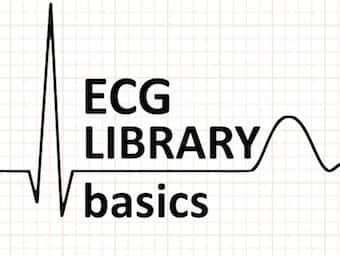
Right Atrial Enlargement
Brief description of right atrial enlargement (P pulmonale) including ECG criteria for diagnosis and list of causes - EKG Library LITFL

Brief description of right atrial enlargement (P pulmonale) including ECG criteria for diagnosis and list of causes - EKG Library LITFL

Review of the EKG features of left atrial enlargement (LAE) aka Left atrial hypertrophy (LAH) - ECG Library LITFL. P mitrale

Narrow and broad/Wide QRS complex morphology Low/high voltage QRS, differential diagnosis, causes and spot diagnosis on LITFL ECG library

The J point is the the junction between the termination of the QRS complex and the beginning of the ST segment. EKG J-point

QT interval is the time from the start of the Q wave to the end of the T wave, time taken for ventricular depolarisation and repolarisation

ECG PR segment is the flat, usually isoelectric segment between end of the P wave and the start of the QRS complex.

Assessment / interpretation of the EKG PR interval. ECG PR interval is the time from the onset of the P wave to the start of the QRS complex.

The characteristic ECG findings in the Wolff-Parkinson-White syndrome include a slurred upstroke to the QRS complex (the Delta wave)

The U wave is a small (0.5 mm) deflection immediately following the T wave, usually in the same direction as the T wave. Best seen leads V2 and V3.

On this page we will discuss and provide examples of R wave abnormalities such as Dominant R wave in V1, aVr and PRWP LITFL ECG Library

Q Wave morphology and interpretation. A Q wave is any negative deflection that precedes an R wave. LITFL ECG Library

Overview of normal P wave features, as well as characteristic abnormalities including atrial enlargement and ectopic atrial rhythms